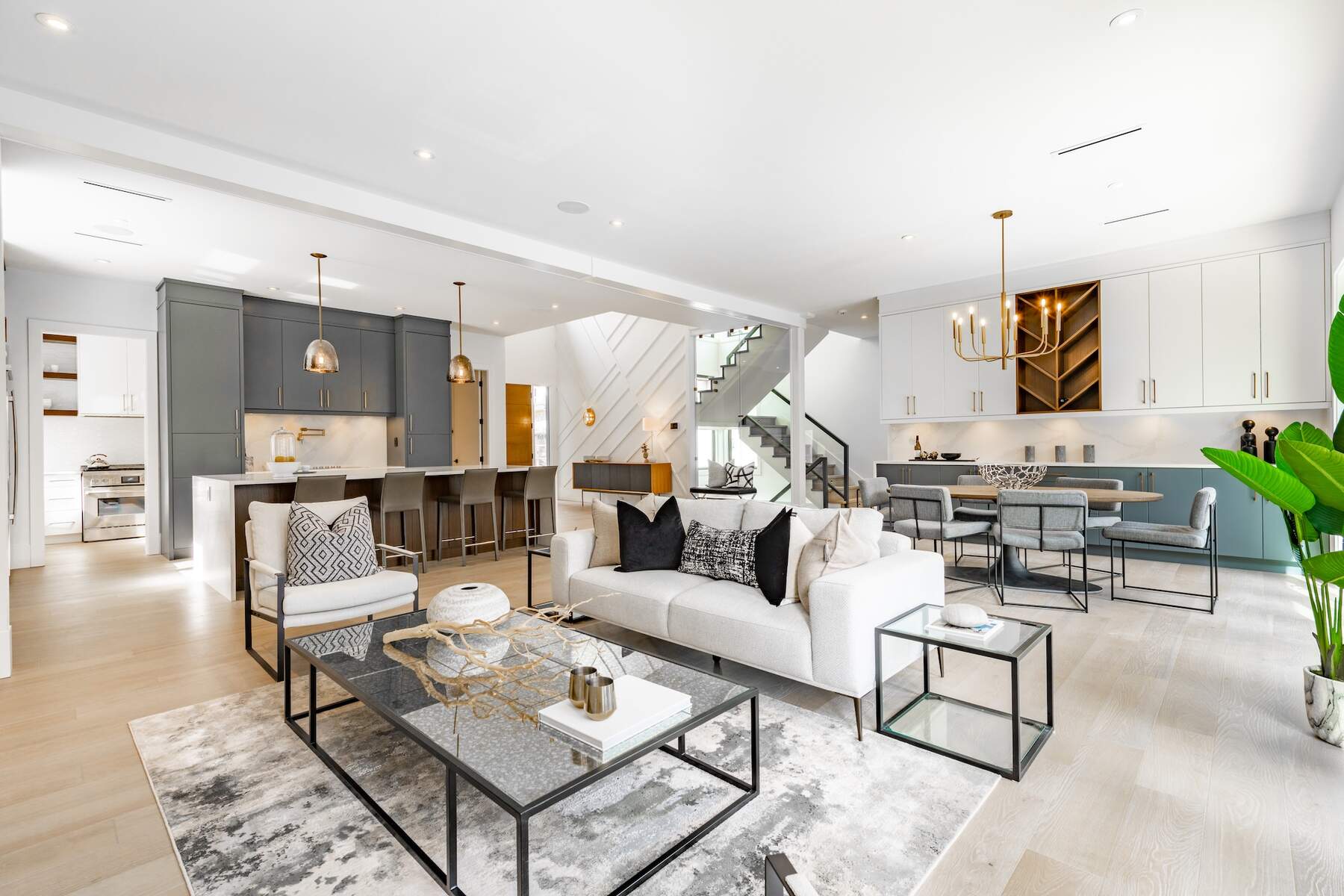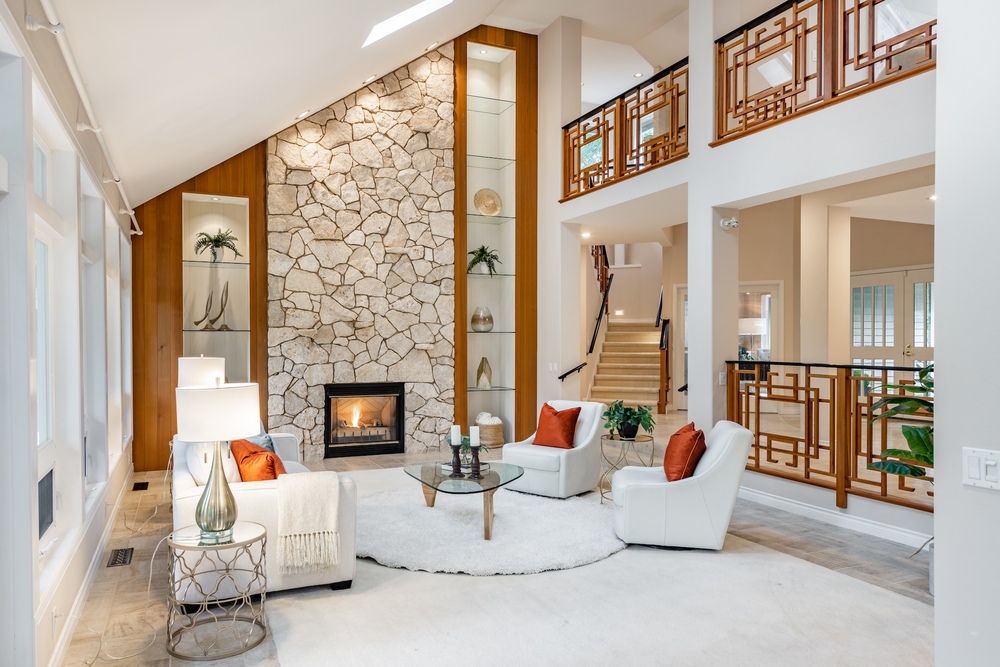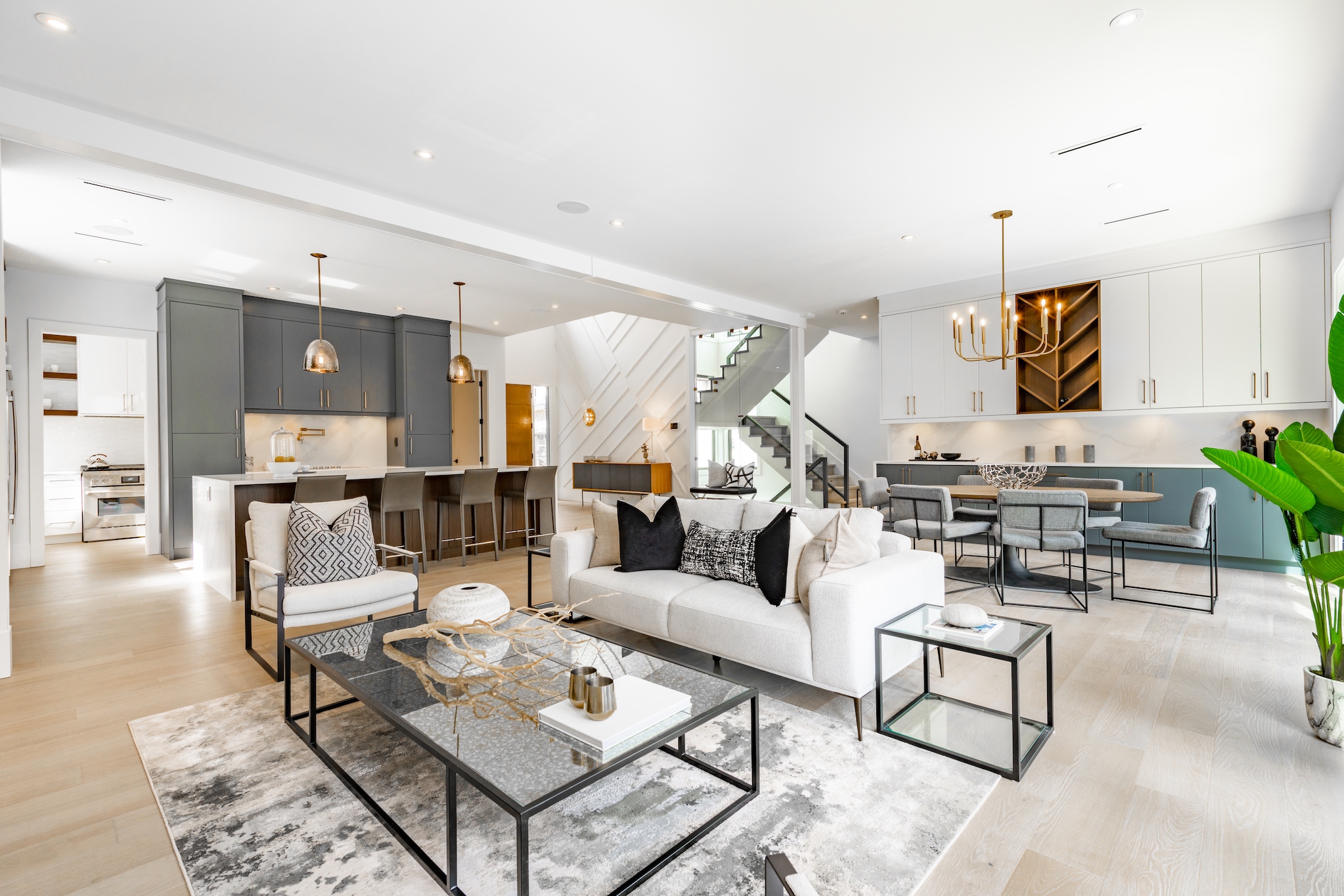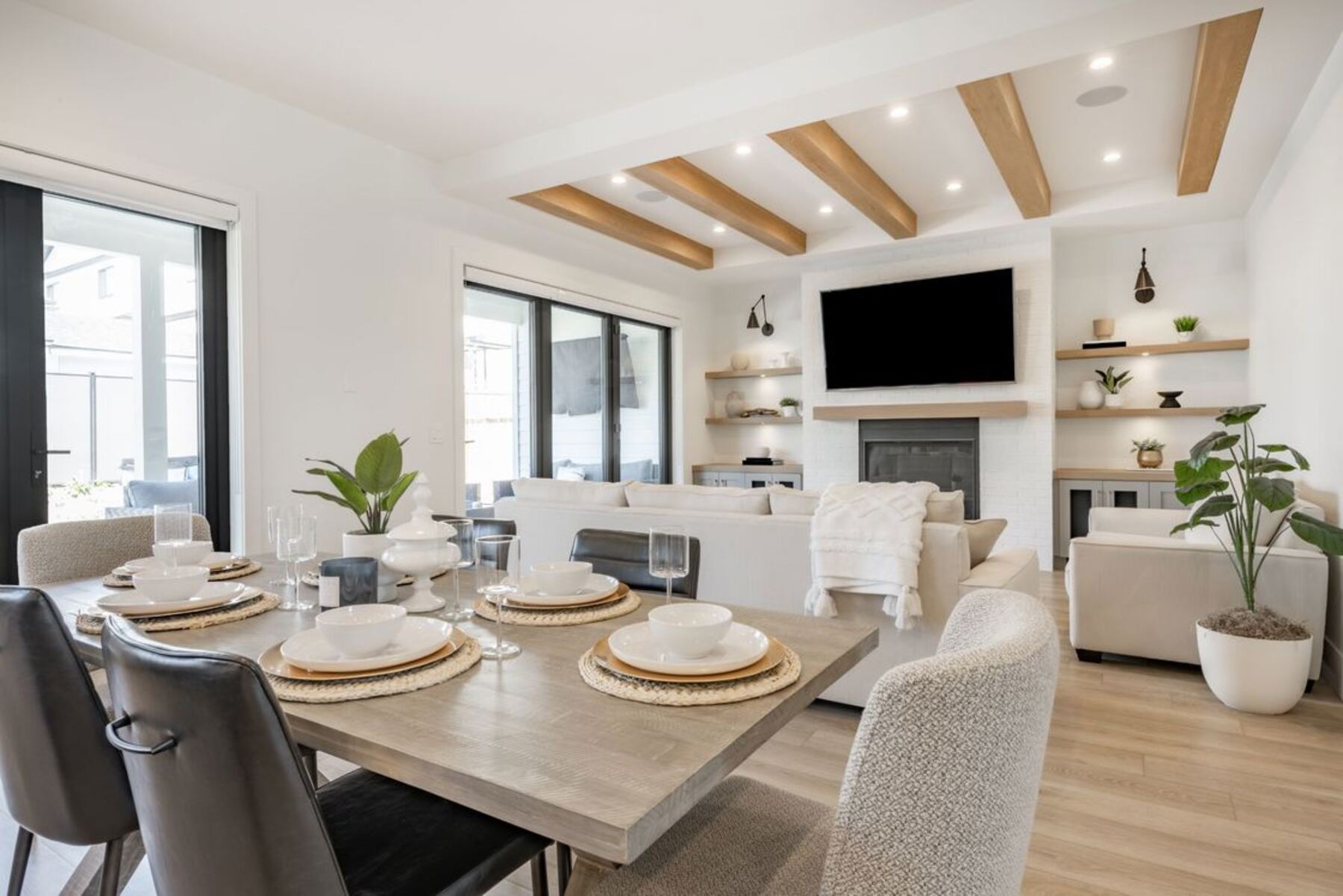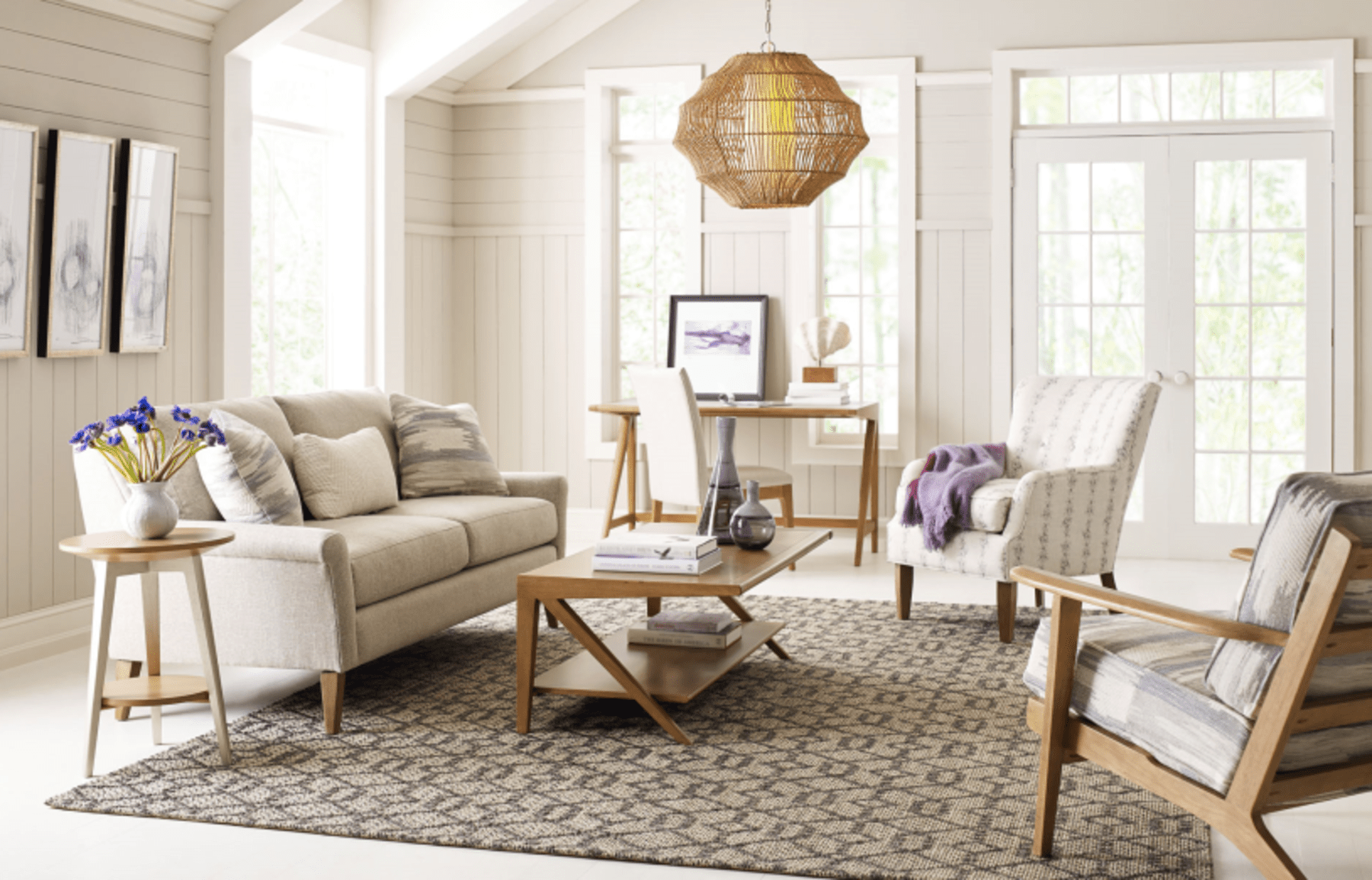Modern interior design comprises several styles with different incarnations, so no wonder it’s so hard to define. I’ve honed expertise in dissecting its subtle elements: understanding how space, color, and materials harmonize in modern interior design. This guide unravels their unique traits, shedding light on their evolution and empowering enthusiasts to curate modern living spaces confidently.
What Is Considered Modern Interior Design?
Modern interior design signifies the elegance discovered within simplicity—a captivating visual journey celebrating the union of form and function. This interior style embraces restrained beauty, favoring clean lines, muted tones, and deliberate space utilization.
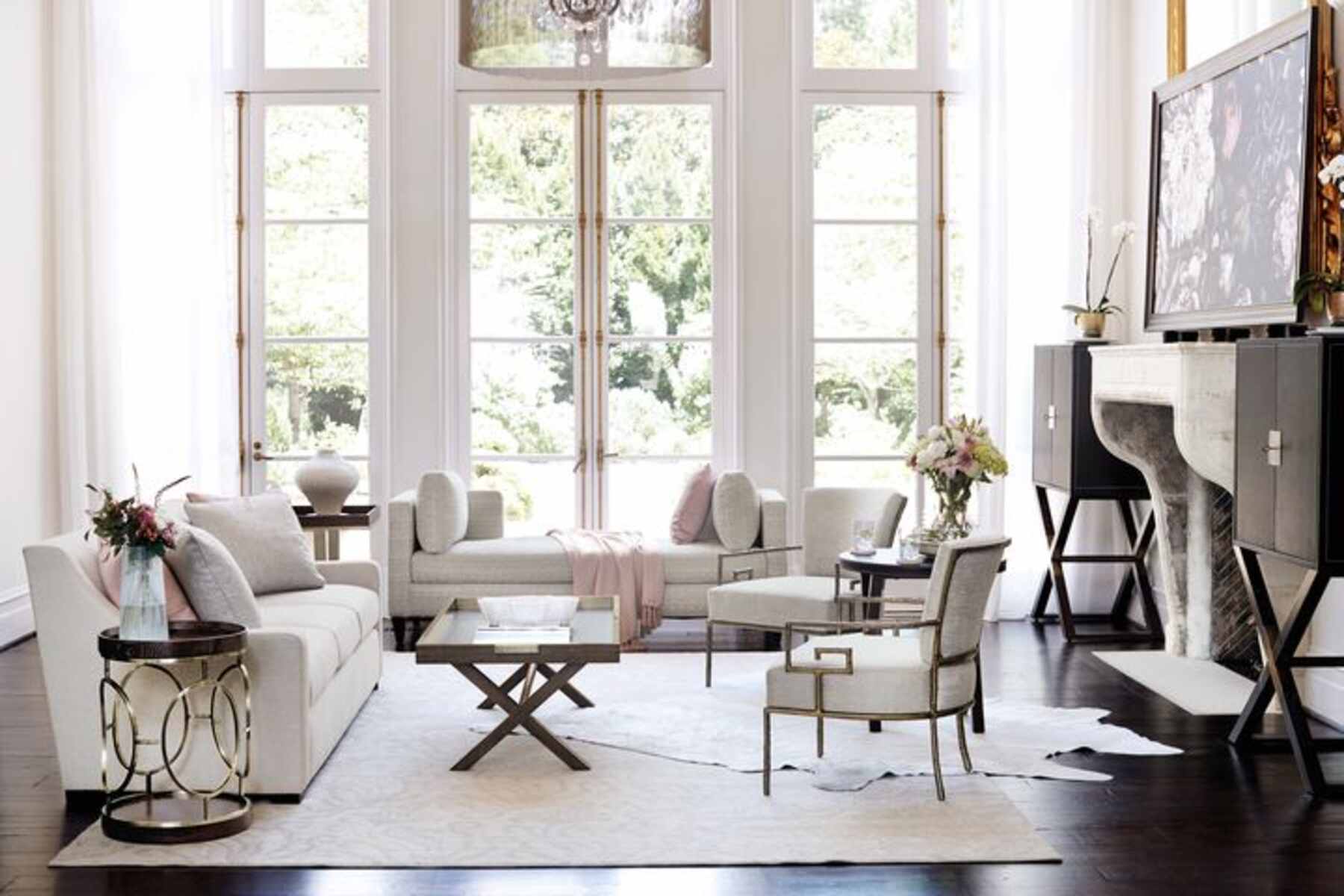
At its core, modern design echoes an era where innovation thrived and minimalism flourished—the early to mid-twentieth century. It’s a tribute to that historical movement that dared to challenge the ornate, welcoming instead the unembellished beauty of natural materials bathed in the gentle embrace of natural light.
The Journey of Modern Design: Tracing Its History
Modern style, a product of an era propelled by technological advancement and a quest for simplicity, embodies a rich tapestry of influences. Its evolution, deeply rooted in the first half of the 20th century, reflects a movement that sought to fuse form and function seamlessly.
The Roots of Modern Style
- Emergence Amid Technological Progress: From the first half of the 20th century, modern style sought simplicity amidst a rapidly changing world dominated by machinery and progress.
- Influences from Art Deco and Beyond: Emerging from the wings of the Art Deco movement, modern style aimed to seamlessly marry form and function, drawing inspiration from German precision and Scandinavian finesse.
Impact of the Bauhaus Movement
- Propagation of Harmonious Design: The Bauhaus movement championed the harmonious coexistence of art, decoration, and functional architecture, significantly shaping the essence of modern style.
Evolution Through Modern Art
- Response to Maximalism: The Modern art movement arose as a response to the extravagance of Maximalism, revering the principle of form bowing to function, profoundly resonating with modern interior design.
- Technological Convergence and Architectural Language: From the 1920s to the early 1950s, advancements in technology and materials like steel and concrete fueled a revolution, birthing a new architectural language characterized by clean lines and open spaces.
Subsequent Variations
- Emergence of Midcentury Modern and Postmodern Design: These variations carried the torch of the modern movement forward, embracing functionality and elegance while weaving new narratives in design evolution.
Testament to Progress and Purpose:
- Historical Influence and Commitment to Purpose: The history and influences of modern style serve as an ode to an era where design harmonized with progress while remaining committed to functionality and purpose.
Traits Defining Modern Interior Style
In an age where spaces shrink and simplicity becomes a coveted luxury, modern interior design emerges as a breath of fresh air, offering a sanctuary amidst the hustle and bustle. Its essence lies in distilled simplicity, a minimalist symphony that resonates within confined interiors.
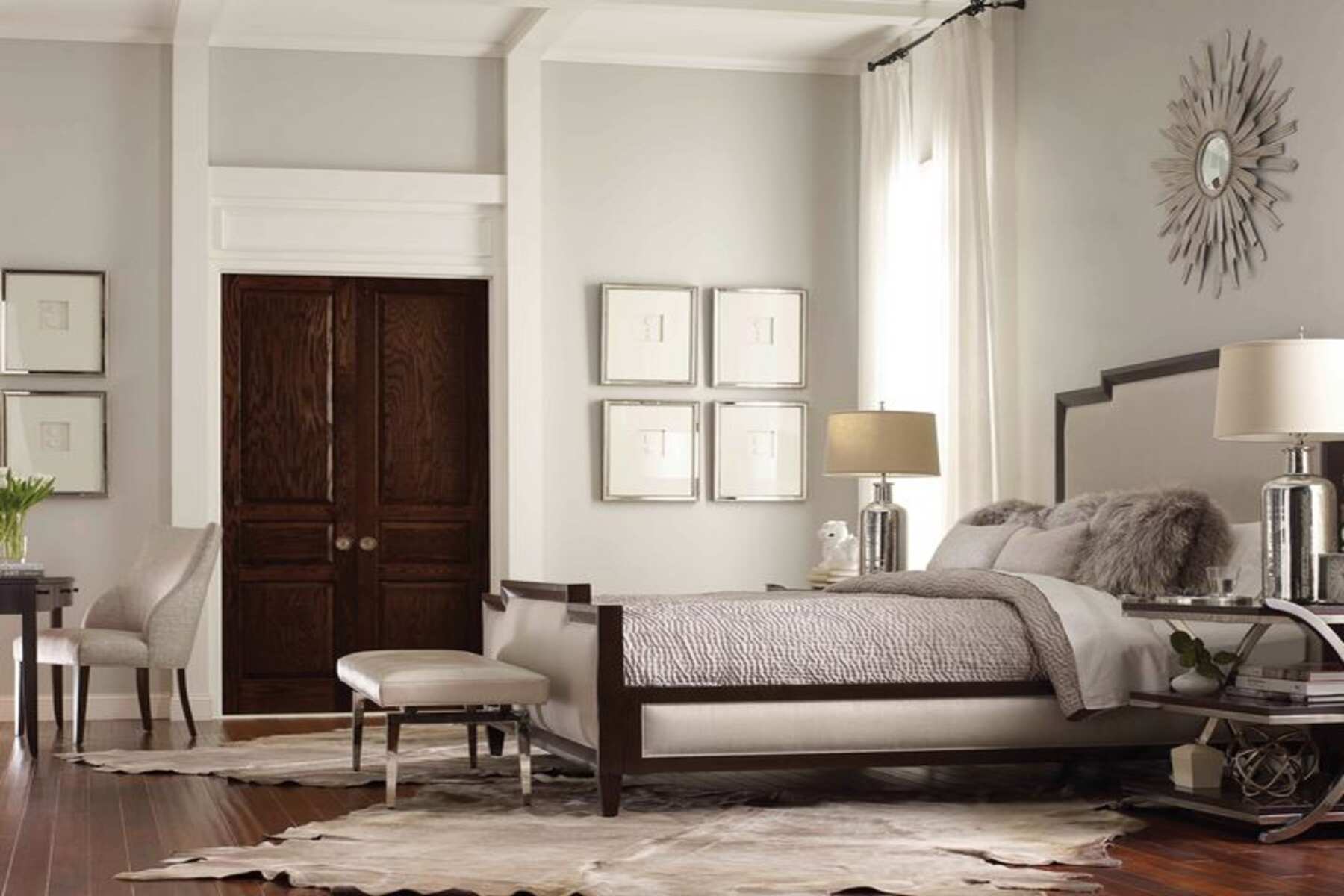
Clean Lines and Elegance: The Essence of Modern Interior StyleTop of Form
Modern interiors embody sleekness and simplicity, a visual symphony composed of clean, straight lines and a deliberate absence of excessive ornamentation. This aesthetic reveals the purity of form, showcasing fewer curves and a preference for sharp, well-defined edges.
The beauty of modernity lies in its rejection of elaborate arches and opulent curves, favoring instead the eloquence of horizontal and vertical lines. These lines aren’t just design elements but also the language through which modern interiors articulate elegance and functionality.
Embracing Minimalism
Modern interiors have a deliberate absence of clutter and extra adornments. It’s a canvas that champions functionality as the true hallmark of design, a philosophy forged in the crucible of Scandinavian minimalism and an unwavering commitment to simplicity.
The genesis of this style can be traced to the tranquil minimalism inherent in Scandinavian design, where every element serves a purpose, and every space is a sanctuary of serenity. It’s a movement that prized clean lines, uncluttered spaces, and a harmonious blend of form and function.
Nature-Inspired Palette
The canvas of neutral palettes within modern interiors is a testament to understated elegance. It’s a deliberate choice to let textures and natural hues take the spotlight, allowing the architectural marvels of these spaces to shine through.
- Neutral and monochromatic palettes define modern interiors, emphasizing understated elegance over flashy colors.
- These palettes utilize natural tones and textures to draw attention to the distinctive architectural elements within the space.
- Calming spaces are created by employing untreated colors reminiscent of concrete or stone, paired with muted paint tones like serene greys, crisp whites, soothing beiges, sophisticated blacks, and subtle pastels.
- The purposeful use of these subdued hues fosters a tranquil atmosphere, contributing to a serene and uncluttered environment.
- Rather than overpowering the space, the palette acts as a complementary backdrop, allowing the architectural elements to take center stage and enhancing the overall experience of the interior.
Open Floor Concept
Open floor plans are ingenious solutions to cramped spaces in smaller homes and apartments. They’re more than just a layout; they’re a gateway to a spacious and inviting environment, embracing the essence of minimalist design trends to redefine modern living.
In these layouts, walls dissolve into the background, fostering an unobstructed flow between different areas. This concept of openness extends beyond physical space, aiming to instill a feeling of expansiveness and liberation within the confines of enclosed areas.
Modest Modern Interiors
Unpretentiousness is the hallmark of modern interior design—a style that thrives on simplicity and modesty. It’s a deliberate embrace of functionality, where every space and object serves a purpose in creating an unassuming yet elegant interior.
Extravagance takes a backseat in a modern interior, making way for practicality and purpose. Opulent elements find no place within these spaces unless they serve a functional role. It’s a deliberate curation where form follows function meticulously.
Incorporate Natural Materials and Light into Modern Interiors
Embracing nature’s essence, modern interiors invite the seamless integration of natural materials and the grace of natural light. This approach, marked by simplicity and a fuss-free demeanor, introduces a new dimension to design by incorporating materials like reinforced concrete and steel, enriching the depth and character of the style.
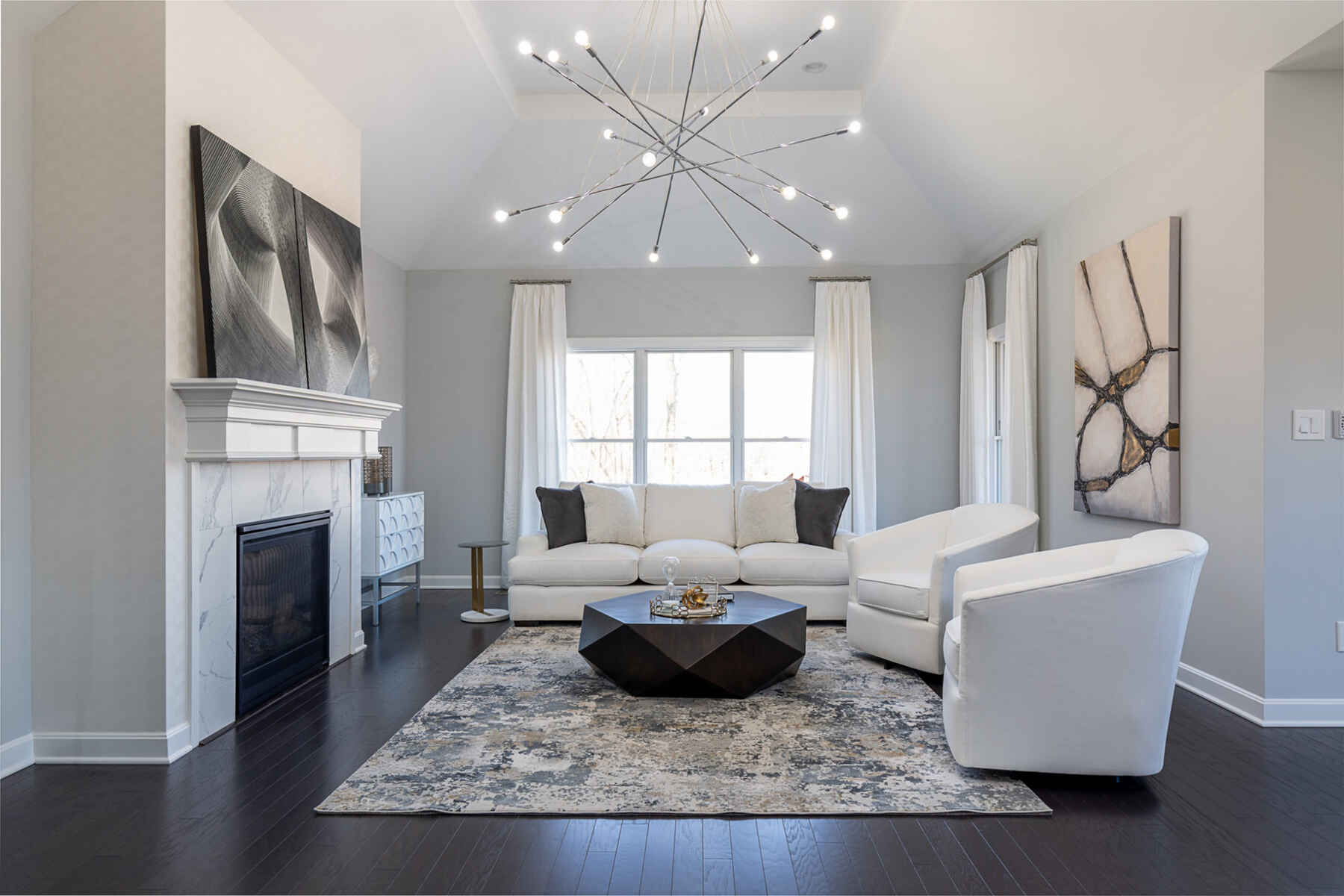
Unpainted wood, sleek metals, supple leather, and a palette dominated by monochromatic hues form the building blocks of modern design. It’s a deliberate choice that speaks to the authenticity of materials and celebrates their innate beauty.
Functional Aspects of Modern Furniture
Modernity in furniture speaks the language of humility and functionality. Standard finishes for modern furniture, such as leather and fabric upholstery, wood veneers, glass, chrome, steel, and even concrete, epitomize the simplicity and practicality of this style.
Interior designing needs to have furniture, particularly if you want to achieve a modern look. It takes on a humble yet purposeful persona. Low-slung and horizontal, these furnishings boast clean, uncluttered lines that define the essence of modern design. They testify to the style’s commitment to minimalism, offering smooth surfaces and a deliberate lack of excessive ornamentation.
Modern Art in Interior Design
Modern art in interior design is a captivating gateway to infusing the modern style’s essence into your living space. Breaking away from traditional realism, modernist artists embarked on a journey of expressive creation, embracing vibrant colors and unconventional forms to redefine artistic expression.
Within the realm of modern art, diversity reigns supreme. From the enigmatic allure of abstract art to the fragmented perspectives of cubism and the vibrant, expressive strokes of Fauvism, each movement encapsulates the dynamic essence of the modern perspective.
Contrast between Modern and Contemporary Interior Design
The distinction between modern and contemporary interior design lies in their relationship with time. Modern design refers to a distinct historical period, embodying the aesthetic values of a bygone era. In contrast, contemporary design reflects the ever-evolving styles of the present moment.
- Temporal Focus: Modern design reflects a specific historical era, typically the early to mid-20th century, embodying the aesthetic values of that time. Conversely, contemporary design is a snapshot of the present moment, evolving with current trends and preferences.
- Flexibility and Evolution: Modern design is rooted in defined aesthetic principles from its era, while contemporary design is more adaptive and flexible. It evolves with ongoing shifts in styles and preferences, embracing a blend of influences without strict adherence to a singular design philosophy.
How to Achieve the Modern Look
Modern design is a diverse style encompassing various approaches, focusing on simplicity and a refined aesthetic. Here are ways creative home designers infuse Vancouver home decor and modern interior design into a home, which you can also try.
- Play with Colors: Opt for neutral wall colors like gray or cream and contrast them with darker furnishings for a striking, high-contrast ambiance.
- Embrace Openness: Consider knocking down separating walls to create an open floor plan central to the modern style, fostering spacious, interconnected living areas.
- Invest in Statement Furniture: Iconic pieces like the Eames Lounge Chair or Barcelona Chair epitomize modern design. Incorporating these items, often a fusion of plywood and leather, can bring a modern aesthetic into your space.
- Natural Material Palette: Incorporate luxurious raw materials like polished chrome, natural wood, and aniline leather for a sleek and sophisticated look that aligns with the essence of modern design.
By incorporating these elements, you can bring the essence of modern design into your home, creating a stylish space that embraces the principles of simplicity and functionality.
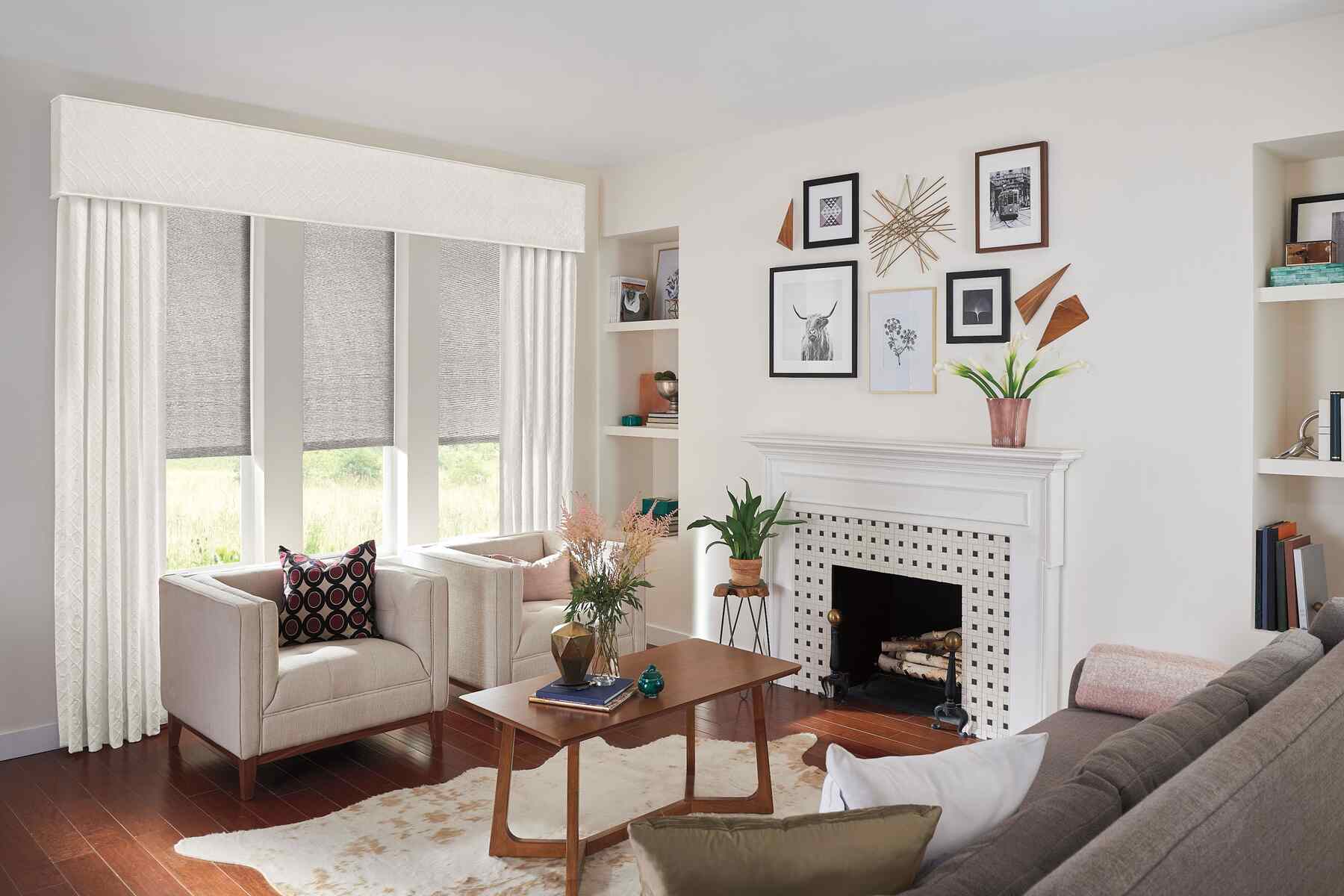
Related Questions
How Can I Achieve a Modern Interior Design Style?
Achieving a modern look involves decluttering, opting for sleek furnishings with clean lines, incorporating neutral color palettes, and integrating natural light into spaces. Professional interior decorating services know how to achieve this using various design elements.
What Are the Key Elements of Modern Interior Design?
Key elements include minimalism, open spaces, the use of materials like glass, metal, and concrete, emphasis on functionality, and the incorporation of natural elements.
Is Modern Interior Design Suitable for Small Spaces?
Yes, Modern Interior Design can work exceptionally well in small spaces due to its emphasis on clean lines, maximizing natural light, and using multifunctional furniture to optimize space. If you have a small space, you can have a free interior design consultation to see what solution is the best to achieve a modern design.
Summary
This exploration demystifies the distinction between modern and contemporary styles. Modern design, originating in the 20th century, champions simplicity, clean lines, and muted tones. The historical journey from Bauhaus to Modern art defines this era and influences the fusion of functionality and elegance.



